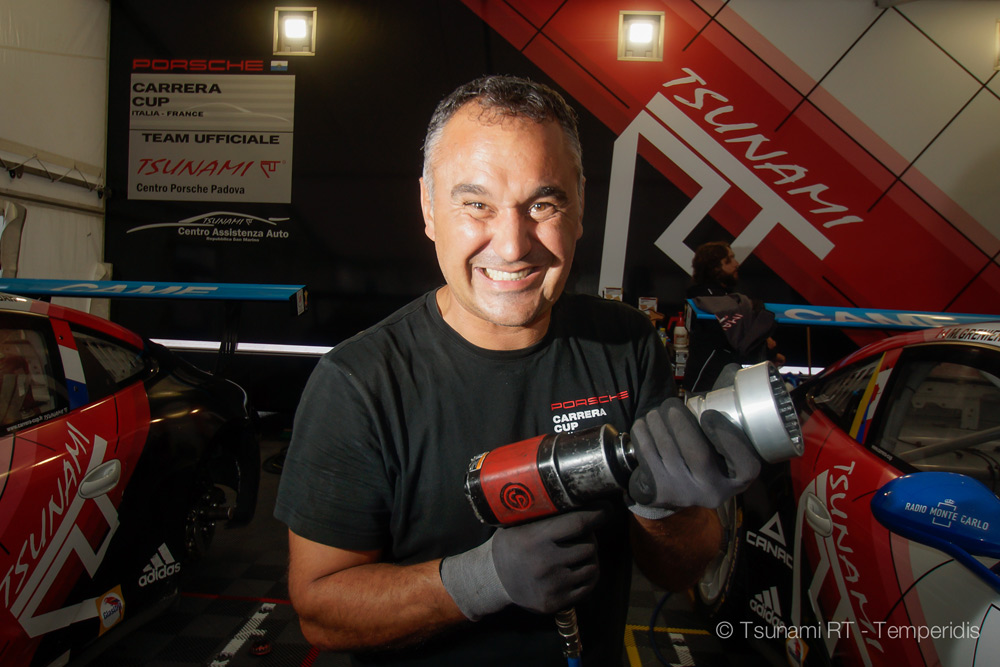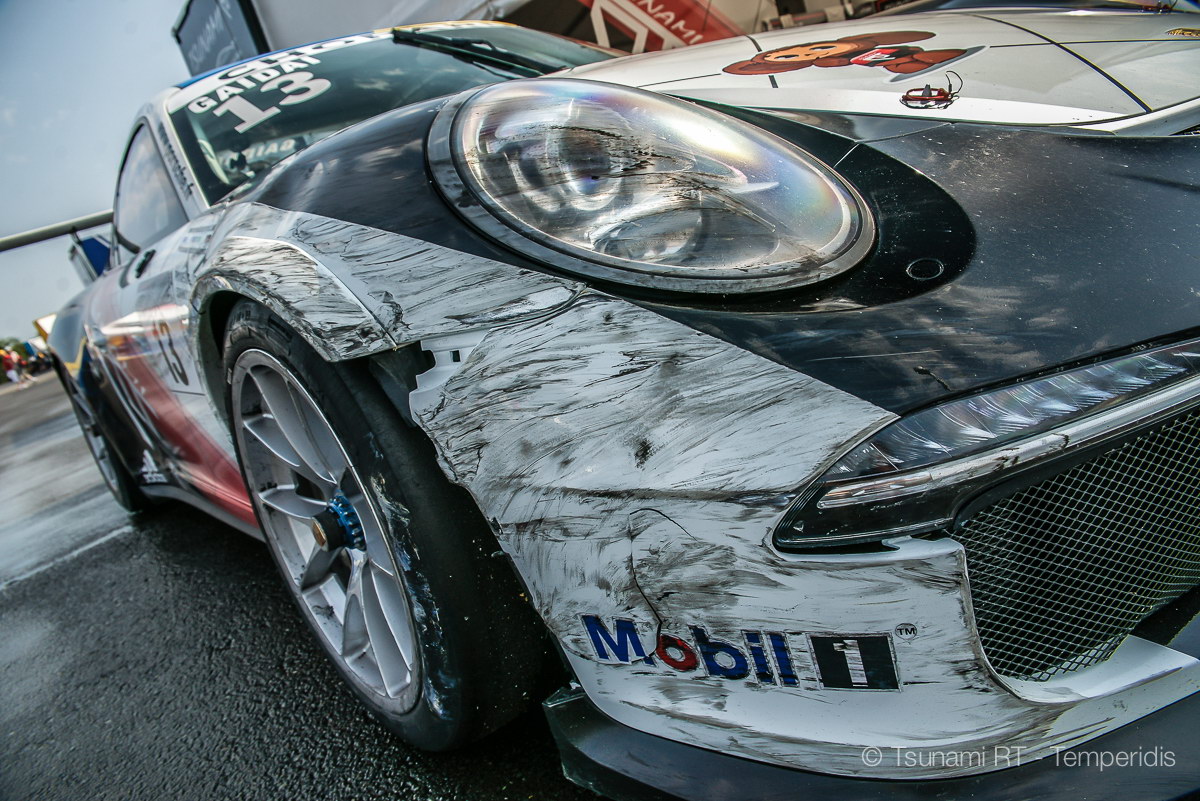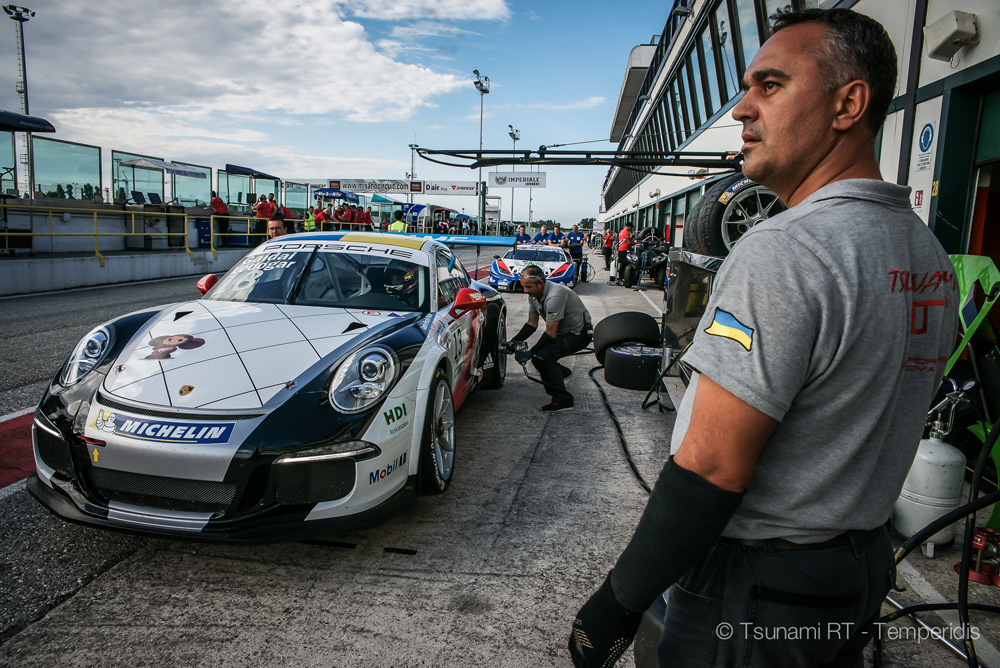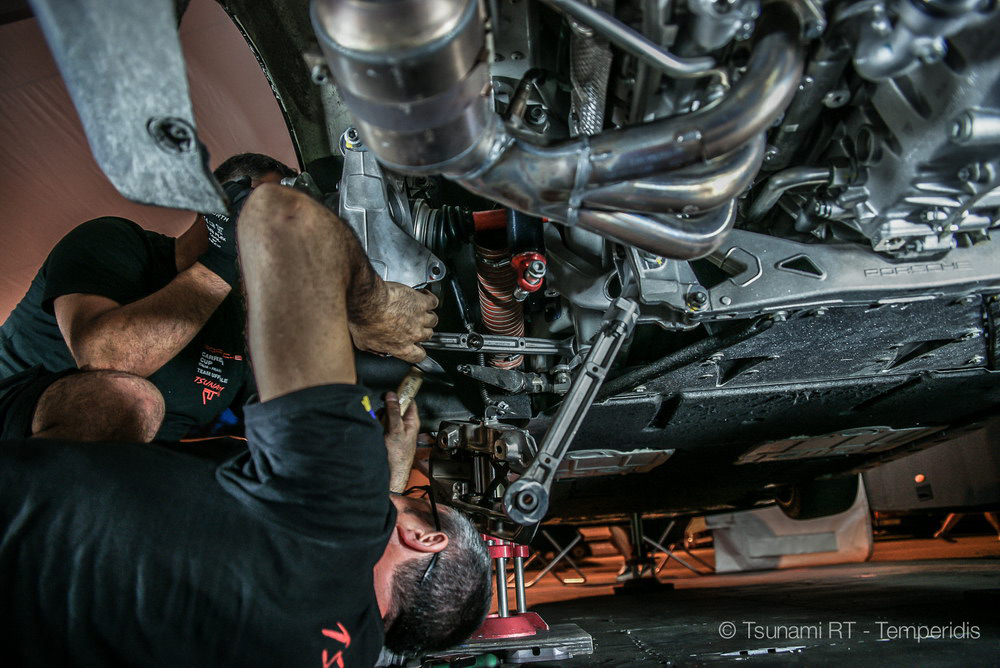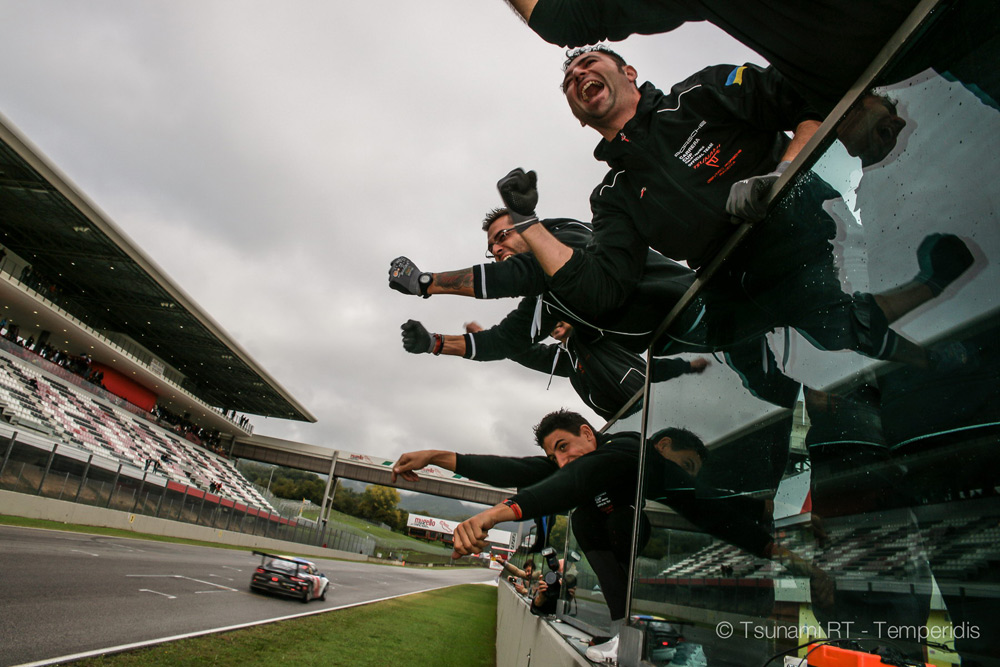Vitalii Timanovskii, the mechanic of Tsunami RT, will tell how to make a new car of a dingy 'bucket' brought to the boxes by a driver. The next race is in an hour, and the public has to see the car in the state meant by the trademark designer, without the signs of 'warm friendly meetings' with his competitors.
V. Timanovskii: "So, apart from the repair itself, our task is not only to make a car move but make it look beautiful. How it is implemented is your personal secret.
If you can see that spoilers, bumpers, and other elements will not be reused because they are rubbish already, so we make them of what we have. Let's take a bumper as an example: how to make a whole of two pieces? The plastic is being ground, filed bright to increase the connective effect, then the two-pack glue for plastic is used, the net is imposed upon, the holes are drilled additionally in staggered order, all this is fixed on the bundle tie, and let's drive with the music!
Another example is a sill. For example, a driver has been hit in the side. The door is made of carbon, it would not be damaged. It might have an invisible fraction, that is enough to seal up with oracal. However, the sill is made of iron, it has been crumpled. A plate is gently put above not to make any damage, and you can carefully planish on the plate with a hammer, put the sill on its place to be able to open and close the door.
It is necessary to have a blowdryer, it is essential for hollow repair. Let's take the bumper as an example: we often see hollows on the corner of a bumper on any car, even on public ones. We warm up the place of hollow carefully not to overheat it. Bumper is a molded plastic, it has its memory, and everything usually fits together during the warm-up. The same is true for the pressed metal. The essential thing is not to change its molecular structure to prevent strain, overheating. If everything is made right, there is even no need to color.
The main point of flattening is to guarantee that works will not compromise the driving process and let to restore the car settings. For example, when a rear wing has been hit, the rail can begin to abrade the rear wheel. We use a special flattening hydraulic jack – it is bumped into a sidemember, then we use special angles, and we lengthen it carefully.
Armoring film is a very useful thing. It is widely used to glue over the public cars with to protect the covering from scratches – hood, door handles, sills, bumpers. The film is essential for cosmetic repair during the races: it has good fixing properties, and it is transparent, thus, invisible. Visually, a car looks like new.
Everything can be sealed up and flattened, and if something does not look nice, we can hide it under oracal, or put a thicker layer of paint.
We had a rally driver Ihor Storchak in Tsunami, and the rear bumper of his car just went scat during one of the races. Ihor arrived to the service with almost no bumper at all, and it had to be at least partially undamaged, according to the rules. Our guys gathered plastic bottles and other garbage everywhere in the neighborhood, then they wrapped it with scotch and glued up with oracal... It was the beauty, not the bumper!.. Only later they caught it, on a special section, and, can you imagine, the content of a trash container flied up – bottles, other garbage in all directions... The viewers were totally impressed!
Thus, we will give you the list of what the mechanic's 'beauty case' should consist of:
• industrial blowdryer
• electric drill
• oracal
• antigravel armoring film (recommended)
• white and black scotch tape
• two-pack glue for plastic (a marvelous thing)
• bundle tie
• good strong hummer
• wooden small boards and plates to use in flattening works
• flattening hydraulic jack
• paint – at least standard white and black colors
• masking tape.
I would also recommend to take the remains of oracal and other cuts when the car is unglued by the specialists, and bring them with you on the race, then even if your car has a complicated painting, you will be able to reach its perfect outlook.
In this case no one can see any defects! A driver comes and says: "Oh, it is a brand-new car! How have you managed to do it?!"
Read also:




